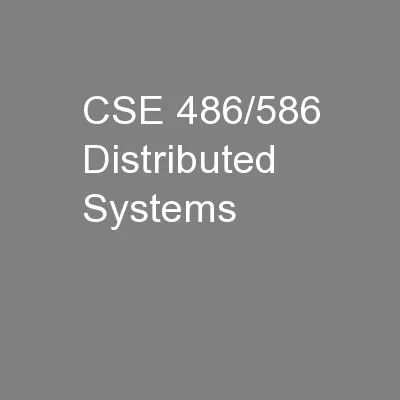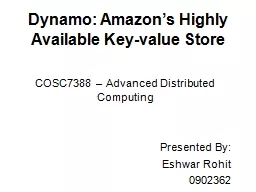PPT-Dynamo: Amazon’s Highly Available Key-value Store
Author : kittie-lecroy | Published Date : 2018-10-13
Giuseppe DeCandia Deniz Hastorun Madan Jampani Gunavardhan Kakulapati Avinash Lakshman Alex Pilchin Swaminathan Sivasubramanian Peter Vosshall and Werner Vogels
Presentation Embed Code
Download Presentation
Download Presentation The PPT/PDF document "Dynamo: Amazon’s Highly Available Key-..." is the property of its rightful owner. Permission is granted to download and print the materials on this website for personal, non-commercial use only, and to display it on your personal computer provided you do not modify the materials and that you retain all copyright notices contained in the materials. By downloading content from our website, you accept the terms of this agreement.
Dynamo: Amazon’s Highly Available Key-value Store: Transcript
Download Rules Of Document
"Dynamo: Amazon’s Highly Available Key-value Store"The content belongs to its owner. You may download and print it for personal use, without modification, and keep all copyright notices. By downloading, you agree to these terms.
Related Documents














